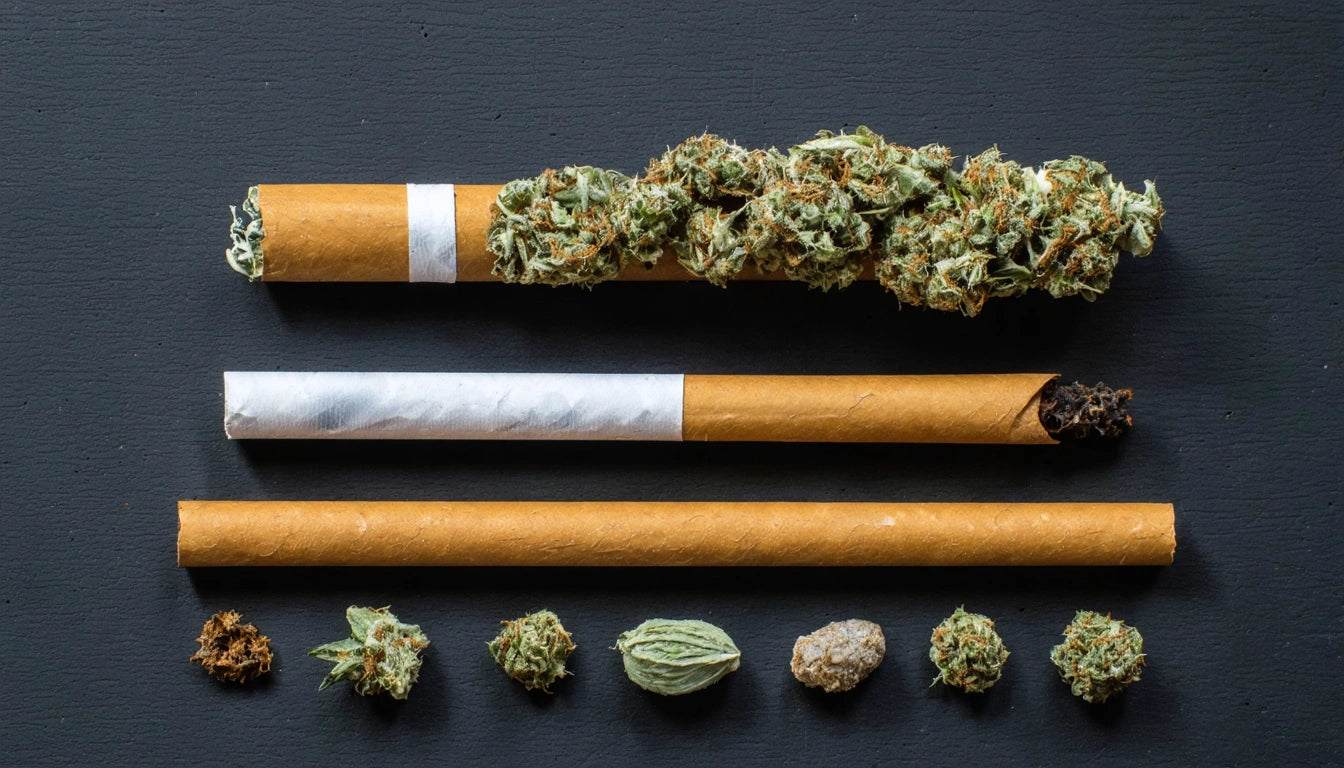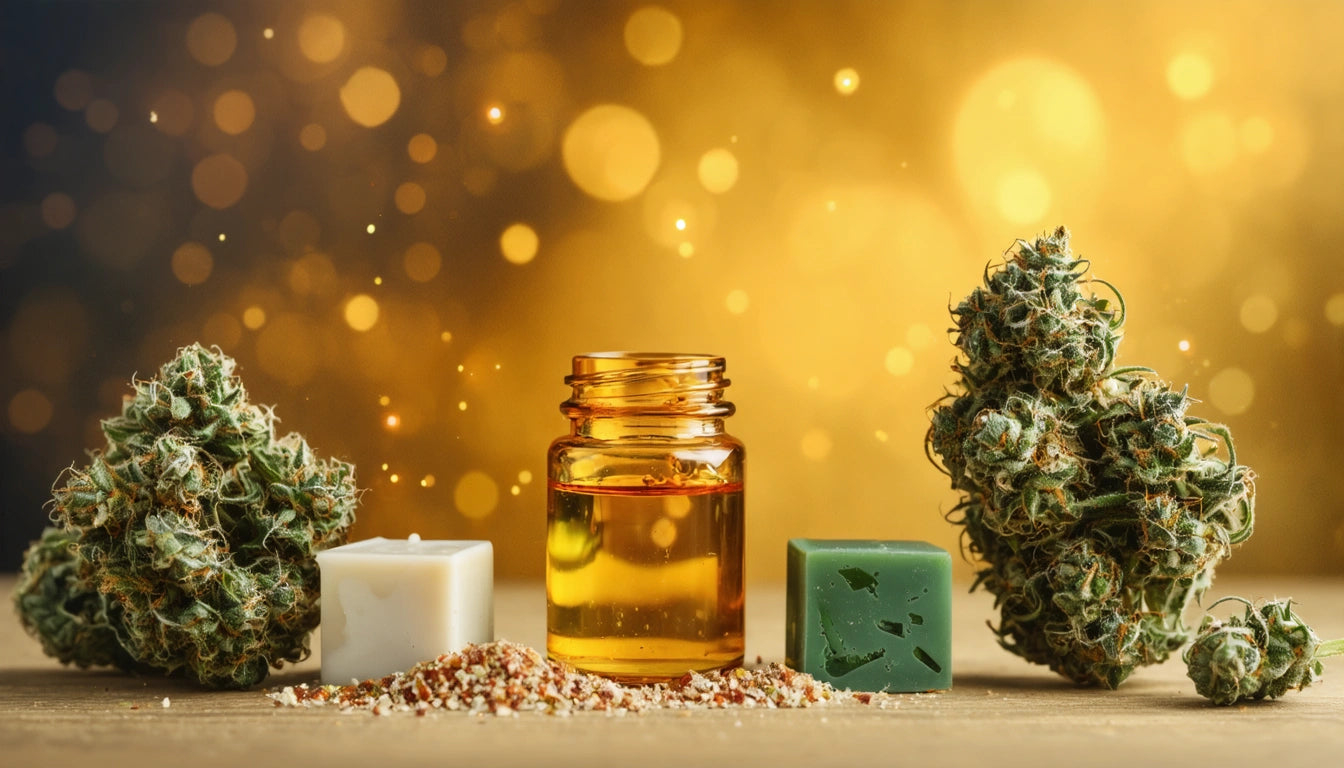Table of Contents
Autoflower vs. Feminized Seeds: Understanding the Differences and Choosing the Best Option
When starting a cannabis cultivation journey, one of the first and most crucial decisions is selecting the right seeds. The debate between autoflower vs. feminized seeds continues to perplex both novice and experienced growers. Each seed type offers distinct advantages and limitations that can significantly impact your growing experience and harvest results.
The Basics of Cannabis Seed Types
Before diving into comparisons, it's essential to understand what these seed varieties actually are.
What Are Feminized Seeds?
Feminized seeds are genetically modified to produce only female plants, eliminating the need to identify and remove male plants that don't produce consumable flowers. According to this comprehensive guide on feminized seeds, these seeds have a 99% chance of developing into female plants, making them highly reliable for consistent flower production.
What Are Autoflower Seeds?
Autoflowering seeds contain genetics from Cannabis ruderalis, a species that automatically transitions to the flowering stage based on age rather than light cycle changes. As explained in this autoflower seed guide, these plants typically begin flowering 2-4 weeks after germination regardless of light exposure.
A common question is "are autoflower seeds feminized?" While not all autoflowers are feminized by default, most reputable seed banks now offer feminized autoflowering seeds to provide the benefits of both varieties.
Key Differences Between Autoflower and Feminized Seeds
Understanding what separates these two popular seed types can help you make an informed decision for your cultivation project.
Growth Cycle and Timing
The most significant difference between autoflower and feminized seeds lies in their growth patterns:
- Feminized seeds follow the traditional photoperiod cycle, requiring specific light/dark periods to trigger flowering
- Autoflower seeds progress through their life cycle automatically, typically completing from seed to harvest in 8-10 weeks
- Feminized plants allow for longer vegetative growth periods, which can be extended by maintaining longer light cycles
This fundamental difference impacts nearly every aspect of the growing experience, from scheduling to training techniques. For those interested in the specific timeline, this resource on autoflowering growth timelines provides detailed phase breakdowns.
Optimal Growing Environments for Each Seed Type
Autoflower vs. Feminized Outdoor
When comparing autoflower vs. feminized outdoor growing, each has distinct advantages:
Autoflowering plants excel in regions with shorter growing seasons or unpredictable weather patterns. Their ability to flower regardless of light conditions means they can produce multiple harvests in a single outdoor season. They also tend to be more discreet due to their compact size.
Feminized photoperiod plants thrive in areas with long, stable summers. They can grow much larger outdoors when given sufficient time, potentially yielding significantly more per plant. For commercial operations using pre-roll packaging solutions for their harvests, the higher yields from feminized plants often translate to greater production capacity.
Autoflower vs. Feminized Indoor
In controlled indoor environments, the choice between autoflower vs. feminized indoor growing depends largely on your space constraints and production goals:
Autoflowers are ideal for grow spaces with height limitations or for perpetual harvest setups. Their predictable growth timeline allows for precise planning and consistent production cycles.
Feminized plants offer more control through techniques like SCROG (Screen of Green) or extended vegetation periods. They typically produce higher yields per plant when given optimal conditions and sufficient time to develop.
Yield and Potency Comparisons
Autoflower vs. Feminized Yield
When examining autoflower vs. feminized yield potential:
Traditionally, feminized photoperiod plants have held the advantage in maximum yield potential. Their longer growth cycle and larger size typically result in more substantial harvests per plant. However, as noted in this guide on maximizing autoflower yields, modern autoflowering genetics have significantly improved, narrowing this gap.
While individual autoflowering plants generally produce less, their faster cycle allows for multiple harvests in the time it takes to complete one feminized photoperiod grow. This can potentially result in greater annual yields in the same growing space.
Autoflower vs. Feminized Potency
Regarding autoflower vs. feminized potency:
Historically, feminized photoperiod plants were known to produce more potent results. Early autoflowering varieties suffered from diluted cannabinoid profiles due to their ruderalis genetics. However, modern breeding has largely eliminated this disadvantage.
Today's premium autoflowering strains regularly test at THC levels comparable to their photoperiod counterparts. For growers seeking specific cannabinoid profiles, this resource on high-yielding autoflower strains highlights varieties with exceptional potency characteristics.
Choosing the Right Seeds for Your Growing Goals
The best choice between autoflower and feminized seeds ultimately depends on your specific situation and goals:
- Choose autoflowering seeds if: You're a beginner, have limited growing space, want multiple harvests per season, grow in regions with short summers, or need a discreet growing option
- Choose feminized seeds if: You want maximum yield per plant, have experience with plant training techniques, can control your growing environment, or want to maintain mother plants for cloning
For those seeking the benefits of both worlds, many cultivators now offer feminized autoflower seeds, which combine the female-only guarantee with automatic flowering traits. These represent some of the best feminized autoflower seeds available for modern growers.
Regardless of which seed type you choose, starting with quality genetics from reputable sources is crucial. This guide to top autoflower seed banks provides valuable insights for sourcing premium seeds.
By understanding the fundamental differences between these two popular seed types, you can make an informed decision that aligns with your growing environment, experience level, and production goals. Whether you prioritize speed, simplicity, maximum yield, or specific growing conditions, there's a seed type perfectly suited to your cannabis cultivation journey.











Leave a comment
All comments are moderated before being published.
This site is protected by hCaptcha and the hCaptcha Privacy Policy and Terms of Service apply.